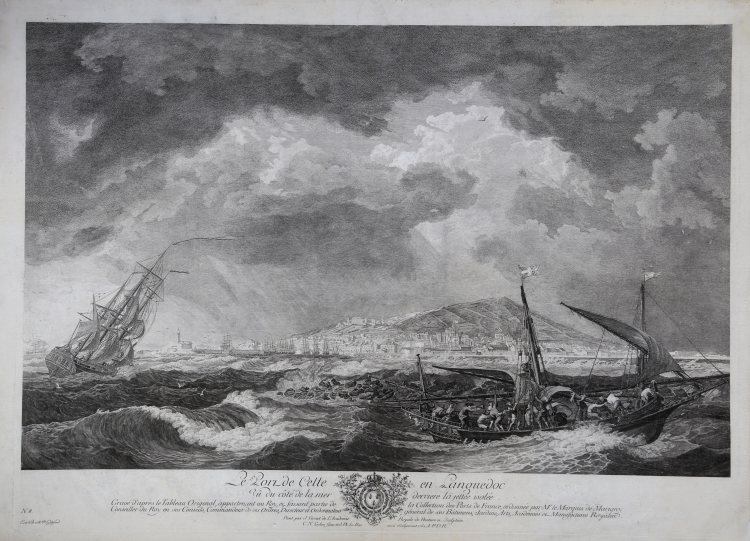



| Reference: | S32485 |
| Author | Charles Nicolas COCHIN |
| Year: | 1762 |
| Measures: | 750 x 540 mm |


| Reference: | S32485 |
| Author | Charles Nicolas COCHIN |
| Year: | 1762 |
| Measures: | 750 x 540 mm |
Etching with engravings, signed and dated at lower center.
A good impression, printed on contemporary laid paper, with margins, some expert repairs at the back, otherwise in good condition.
This plate is engraved by Cochin & Jacques Philippe Le Bas, after a painting by Joseph Vernet.
Vernet was commissioned by Louis XV in 1753 to paint fifteen views of the main ports of France, and given the exceptional title of peintre des marines de sa majesté. He spent twelve years travelling around the Mediterranean, Atlantic and Channel coasts with his family and servants in tow.
The country was at war with England at the time, and Louis specifically requested that the artist show off the economic activities and maritime strength of France, which Vernet did to much acclaim. The majority of the paintings are in the Musée de la Marine in Paris.
|
Arlaud 250; IFF 316. II.
|
Charles Nicolas COCHIN (Paris, 29 Aprile 1688; Parigi, 16 Giugno 1754).
|
Engraver. He trained with his father, Charles Cochin, as a painter, but turned c. 1712 to engraving. In 1729 he was made an associate member (agréé) of the Académie Royale, and in 1731 he was received (reçu) as a full member. He was one of the best interpreters of Antoine Watteau, of Jean-François de Troy and of Jean-Siméon Chardin. He also contributed plates to a suite of engravings after Antoine Coypel for Don Quixote, and to the Recueil Crozat. From the 1740s he made engravings mainly after drawings by his son.
|
|
Arlaud 250; IFF 316. II.
|
Charles Nicolas COCHIN (Paris, 29 Aprile 1688; Parigi, 16 Giugno 1754).
|
Engraver. He trained with his father, Charles Cochin, as a painter, but turned c. 1712 to engraving. In 1729 he was made an associate member (agréé) of the Académie Royale, and in 1731 he was received (reçu) as a full member. He was one of the best interpreters of Antoine Watteau, of Jean-François de Troy and of Jean-Siméon Chardin. He also contributed plates to a suite of engravings after Antoine Coypel for Don Quixote, and to the Recueil Crozat. From the 1740s he made engravings mainly after drawings by his son.
|